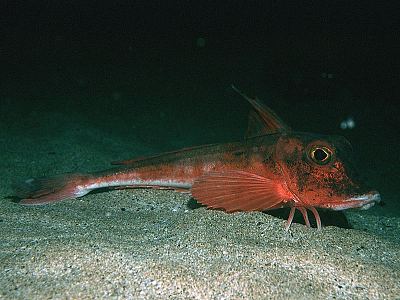
Chelidonichthys spinosus
FAMILY
Triglidae
TAXONOMY
Chelidonichthys spinosus McClelland, 1844, China.
OTHER COMMON NAMES
Japanese: Hфbф.
PHYSICAL CHARACTERISTICS
Reaches 15.7 in (40 cm) maximum length. Head encased in
bony armor with short rostral projections. Body coloration
varies from brown to light orange or red when under stress.
The dorsal surface of this species has brown patches, and the
inner surface of the pectoral fins is olive to dark green, with
scattered blue or white spots.
DISTRIBUTION
Found from southern Hokkaido (Japan) south to the South
China Sea.
HABITAT
Found on sandy bottoms.
BEHAVIOR
The red gurnard, like all sea robins, spends much of its time
“walking” on the seafloor, using its free pectoral rays to probe
the sediment for food. Capable of making sounds using drumming
muscles that are beaten against the gas bladder. Venom
has not been found.
FEEDING ECOLOGY AND DIET
The diet consists mainly of various crustaceans and mollusks.
Preyed upon by larger predatory fishes.
REPRODUCTIVE BIOLOGY
The red gurnard produces large pelagic eggs. There have been
numerous reports of increased male grunting during the breeding
season, suggesting that auditory signals are important in
mate selection.
CONSERVATION STATUS
Not listed by the IUCN.
SIGNIFICANCE TO HUMANS
An excellent food fish. Taken by trawlers throughout its
range.
Other popular Animals
Photo Gallery of - Red gurnard

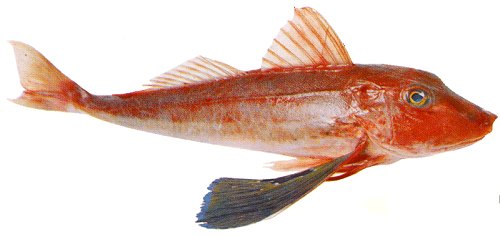
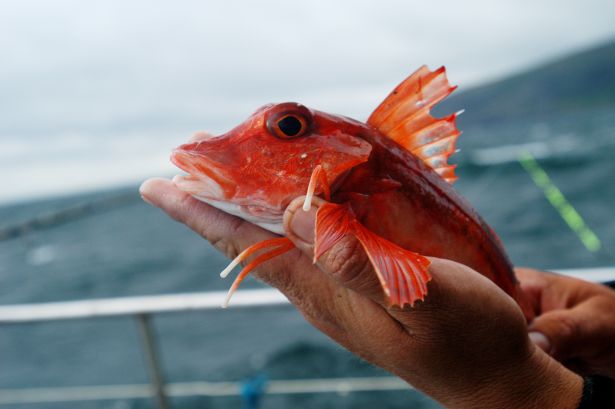
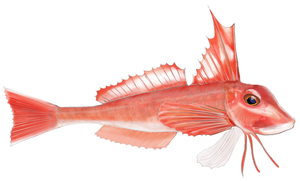
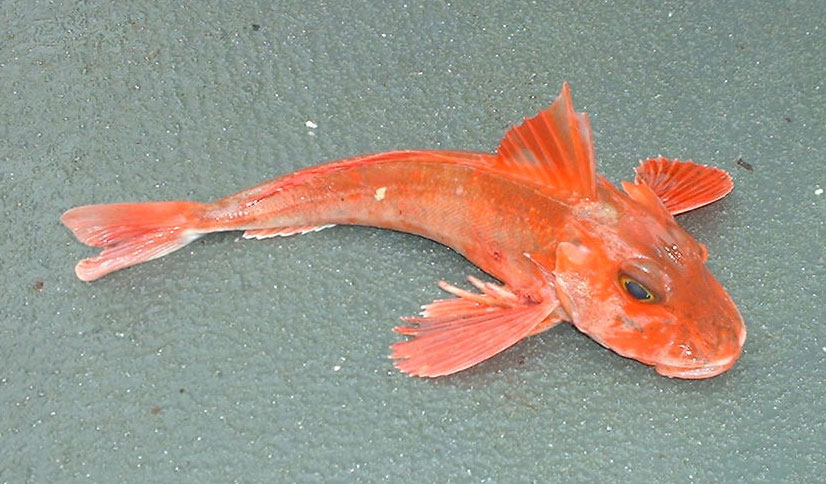
 Animalia Life
Animalia Life